Rodrigo
Shohin
I posted a video of the multiple junipers along my front yard in a yamadori thread and I finally picked out which one I'm digging up.
Can anyone identity the type of juniper it might be?
As of now my plan is to dig it up in the spring as buds swell and building a grow box depending on the root ball size, as small as possible while fitting the roots. I know ideally we'd want the tree to be in a small shallow soil deposit as to not have long running roots but obviously here that's not the case. I've been fertilizing it every now and then over the spring and summer to try to get it strong before collection but it's been extremely hot and dry all summer here. It does have good strong growing tips though.
Any tips on collecting? My main questions are:
1. How big should I keep the root ball?
2. Should I do any trenching before then so it has some time to grow roots closer to the trunk?
3. Should I keep the root ball full of yard soil when it goes into the grow box with Pumice?
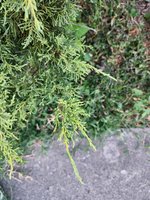
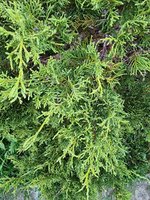
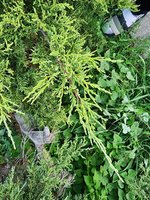
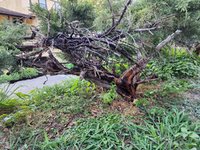
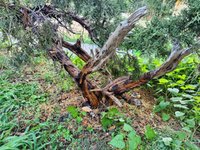
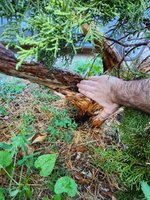
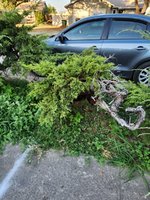
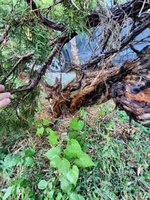
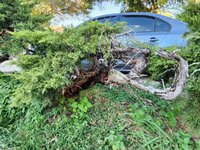
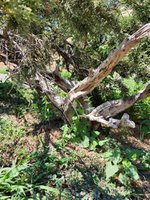
As you can see it has a lot of dead wood. In fact, all of the foliage comes from trunk that extends way out and the u-turns back over the trunk, and has multiple branches coming off of it (you can see the u-turns in the second to last Pic). The rest of the trunks/branches are all deadwood
Can anyone identity the type of juniper it might be?
As of now my plan is to dig it up in the spring as buds swell and building a grow box depending on the root ball size, as small as possible while fitting the roots. I know ideally we'd want the tree to be in a small shallow soil deposit as to not have long running roots but obviously here that's not the case. I've been fertilizing it every now and then over the spring and summer to try to get it strong before collection but it's been extremely hot and dry all summer here. It does have good strong growing tips though.
Any tips on collecting? My main questions are:
1. How big should I keep the root ball?
2. Should I do any trenching before then so it has some time to grow roots closer to the trunk?
3. Should I keep the root ball full of yard soil when it goes into the grow box with Pumice?










As you can see it has a lot of dead wood. In fact, all of the foliage comes from trunk that extends way out and the u-turns back over the trunk, and has multiple branches coming off of it (you can see the u-turns in the second to last Pic). The rest of the trunks/branches are all deadwood


